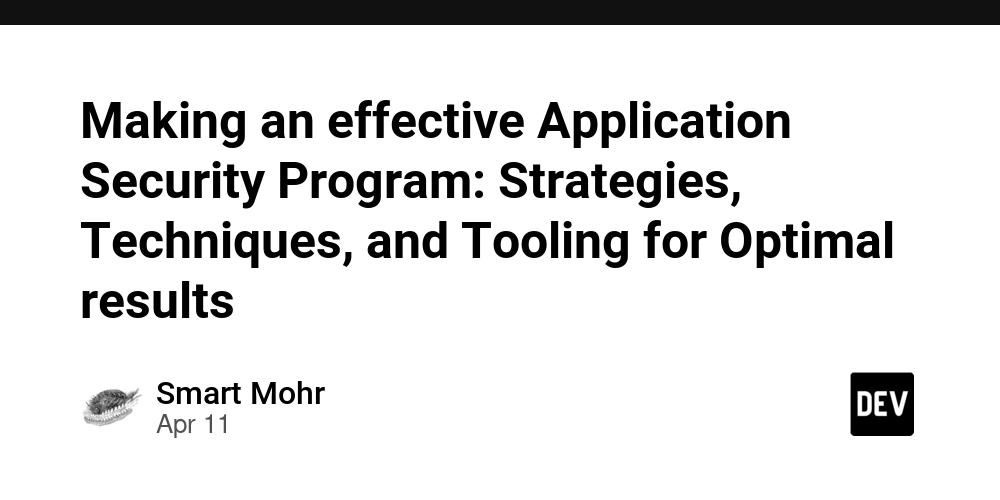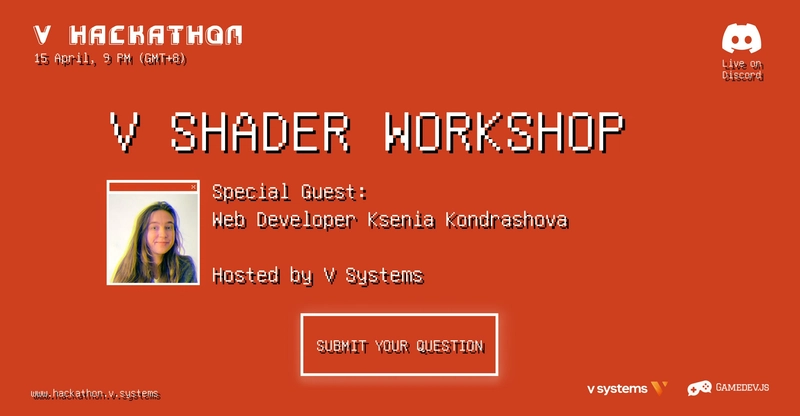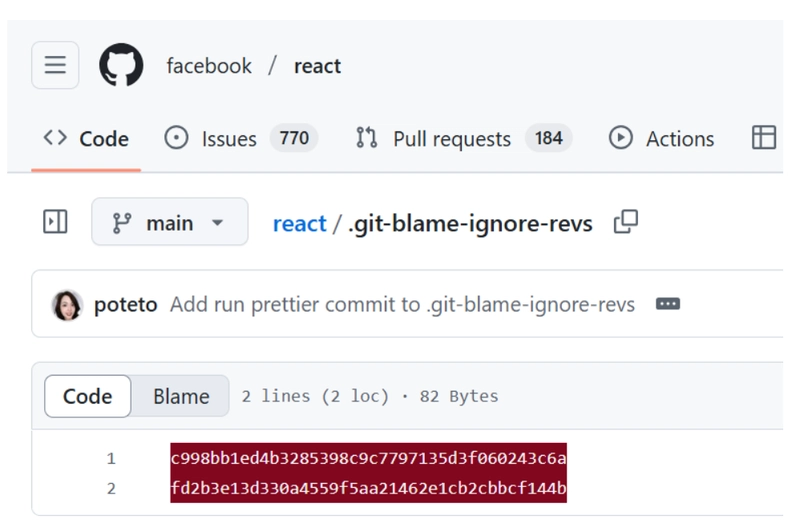Making an effective Application Security Program: Strategies, Techniques, and Tooling for Optimal results
The complexity of contemporary software development requires an extensive, multi-faceted approach to application security (AppSec) that goes beyond the simple scanning of vulnerabilities and remediation. what role does ai play in appsec The constantly changing threat landscape, in conjunction with the rapid pace of technological advancement and the growing intricacy of software architectures, requires a comprehensive, proactive approach that seamlessly incorporates security into all phases of the development lifecycle. This comprehensive guide explores the key components, best practices and cutting-edge technology that help to create an efficient AppSec program. It helps organizations increase the security of their software assets, mitigate the risk of attacks and create a security-first culture. The success of an AppSec program is built on a fundamental change in the way people think. Security should be seen as an integral component of the development process, and not an extra consideration. This fundamental shift in perspective requires a close partnership between security, developers operations, and others. It helps break down the silos and creates a sense of shared responsibility, and encourages collaboration in the security of apps that they create, deploy or manage. DevSecOps lets companies integrate security into their processes for development. It ensures that security is taken care of at all stages starting from the initial ideation stage, through design, and implementation, up to continuous maintenance. This approach to collaboration is based on the development of security standards and guidelines, which provide a framework to secure code, threat modeling, and vulnerability management. These policies should be based on industry-standard practices like the OWASP top 10 list, NIST guidelines, and the CWE. They must be mindful of the specific requirements and risk that an application's and their business context. By formulating these policies and making available to all stakeholders, organizations are able to ensure a uniform, standardized approach to security across their entire portfolio of applications. To operationalize these policies and make them actionable for developers, it's crucial to invest in comprehensive security training and education programs. These programs should provide developers with the knowledge and expertise to write secure code as well as identify vulnerabilities and follow best practices for security throughout the process of development. The training should cover many topics, including secure coding and the most common attacks, as well as threat modeling and safe architectural design principles. Organizations can build a solid foundation for AppSec through fostering a culture that encourages continuous learning and giving developers the resources and tools they require to integrate security in their work. see security options Organizations must implement security testing and verification procedures in addition to training to identify and fix vulnerabilities before they can be exploited. automated vulnerability validation This requires a multilayered method that combines static and dynamic analysis methods and manual code reviews as well as penetration testing. The development phase is in its early phases Static Application Security Testing tools (SAST) are a great tool to discover vulnerabilities like SQL Injection, Cross-Site scripting (XSS) and buffer overflows. Dynamic Application Security Testing (DAST) tools can, on the contrary, can be used to simulate attacks on running software, and identify vulnerabilities that are not detectable using static analysis on its own. These automated tools can be extremely helpful in finding security holes, but they're not the only solution. Manual penetration testing by security experts is also crucial to discover the business logic-related weaknesses that automated tools might miss. By combining automated testing with manual verification, companies can obtain a more complete view of their application's security status and prioritize remediation based on the potential severity and impact of vulnerabilities that are identified. To enhance the efficiency of the effectiveness of an AppSec program, businesses should look into leveraging advanced technologies such as artificial intelligence (AI) and machine learning (ML) to improve their security testing and vulnerability management capabilities. AI-powered software can examine large amounts of application and code data and spot patterns and anomalies that could signal security problems. These tools also learn from previous vulnerabilities and attack patterns, continually increasing their capability to spot and stop new security threats. One particularly promising application of AI within AppSec is the use of code property graphs (CPGs) to enable more precise and effective vulnerability identification and remediation. CPGs are a comprehensive, conceptual representation of an a

The complexity of contemporary software development requires an extensive, multi-faceted approach to application security (AppSec) that goes beyond the simple scanning of vulnerabilities and remediation. what role does ai play in appsec The constantly changing threat landscape, in conjunction with the rapid pace of technological advancement and the growing intricacy of software architectures, requires a comprehensive, proactive approach that seamlessly incorporates security into all phases of the development lifecycle. This comprehensive guide explores the key components, best practices and cutting-edge technology that help to create an efficient AppSec program. It helps organizations increase the security of their software assets, mitigate the risk of attacks and create a security-first culture.
The success of an AppSec program is built on a fundamental change in the way people think. Security should be seen as an integral component of the development process, and not an extra consideration. This fundamental shift in perspective requires a close partnership between security, developers operations, and others. It helps break down the silos and creates a sense of shared responsibility, and encourages collaboration in the security of apps that they create, deploy or manage. DevSecOps lets companies integrate security into their processes for development. It ensures that security is taken care of at all stages starting from the initial ideation stage, through design, and implementation, up to continuous maintenance.
This approach to collaboration is based on the development of security standards and guidelines, which provide a framework to secure code, threat modeling, and vulnerability management. These policies should be based on industry-standard practices like the OWASP top 10 list, NIST guidelines, and the CWE. They must be mindful of the specific requirements and risk that an application's and their business context. By formulating these policies and making available to all stakeholders, organizations are able to ensure a uniform, standardized approach to security across their entire portfolio of applications.
To operationalize these policies and make them actionable for developers, it's crucial to invest in comprehensive security training and education programs. These programs should provide developers with the knowledge and expertise to write secure code as well as identify vulnerabilities and follow best practices for security throughout the process of development. The training should cover many topics, including secure coding and the most common attacks, as well as threat modeling and safe architectural design principles. Organizations can build a solid foundation for AppSec through fostering a culture that encourages continuous learning and giving developers the resources and tools they require to integrate security in their work.
see security options Organizations must implement security testing and verification procedures in addition to training to identify and fix vulnerabilities before they can be exploited. automated vulnerability validation This requires a multilayered method that combines static and dynamic analysis methods and manual code reviews as well as penetration testing. The development phase is in its early phases Static Application Security Testing tools (SAST) are a great tool to discover vulnerabilities like SQL Injection, Cross-Site scripting (XSS) and buffer overflows. Dynamic Application Security Testing (DAST) tools can, on the contrary, can be used to simulate attacks on running software, and identify vulnerabilities that are not detectable using static analysis on its own.
These automated tools can be extremely helpful in finding security holes, but they're not the only solution. Manual penetration testing by security experts is also crucial to discover the business logic-related weaknesses that automated tools might miss. By combining automated testing with manual verification, companies can obtain a more complete view of their application's security status and prioritize remediation based on the potential severity and impact of vulnerabilities that are identified.
To enhance the efficiency of the effectiveness of an AppSec program, businesses should look into leveraging advanced technologies such as artificial intelligence (AI) and machine learning (ML) to improve their security testing and vulnerability management capabilities. AI-powered software can examine large amounts of application and code data and spot patterns and anomalies that could signal security problems. These tools also learn from previous vulnerabilities and attack patterns, continually increasing their capability to spot and stop new security threats.
One particularly promising application of AI within AppSec is the use of code property graphs (CPGs) to enable more precise and effective vulnerability identification and remediation. CPGs are a comprehensive, conceptual representation of an application's codebase. They capture not just the syntactic architecture of the code, but as well as the complicated connections and dependencies among different components. By leveraging the power of CPGs AI-driven tools, they can provide a thorough, context-aware analysis of an application's security profile by identifying weaknesses that might be overlooked by static analysis techniques.
CPGs are able to automate the remediation of vulnerabilities applying AI-powered techniques to repair and transformation of code. By analyzing the semantic structure of the code and the nature of the weaknesses, AI algorithms can generate targeted, context-specific fixes that solve the root cause of the issue rather than simply treating symptoms. This method will not only speed up process of remediation, but also minimizes the possibility of breaking functionality, or creating new security vulnerabilities.
Another key aspect of an effective AppSec program is the incorporation of security testing and validation into the continuous integration and continuous deployment (CI/CD) process. Through automated security checks and integrating them into the process of building and deployment it is possible for organizations to detect weaknesses earlier and stop them from getting into production environments. This shift-left approach for security allows quicker feedback loops and reduces the amount of time and effort needed to find and fix problems.
To reach the level of integration required enterprises must invest in appropriate infrastructure and tools to support their AppSec program. Not only should these tools be utilized for security testing and testing, but also the platforms and frameworks which enable integration and automation. Containerization technologies like Docker and Kubernetes play a crucial role in this regard, because they offer a reliable and uniform setting for testing security and isolating vulnerable components.
Alongside technical tools, effective collaboration and communication platforms are crucial to fostering a culture of security and enabling cross-functional teams to work together effectively. Issue tracking tools, such as Jira or GitLab can assist teams to focus on and manage the risks, while chat and messaging tools such as Slack or Microsoft Teams can facilitate real-time communication and sharing of knowledge between security specialists as well as development teams.
The ultimate achievement of an AppSec program is not solely on the tools and techniques employed but also on the employees and processes that work to support them. Building a strong, security-focused culture requires the support of leaders along with clear communication and an effort to continuously improve. The right environment for organizations can be created that makes security more than just a box to check, but an integral part of development by encouraging a sense of responsibility, encouraging dialogue and collaboration offering resources and support and instilling a sense of security is a shared responsibility.
To ensure long-term viability of their AppSec program, companies must also be focused on developing meaningful metrics and key performance indicators (KPIs) to measure their progress and find areas to improve. These measures should encompass the entire life cycle of an application, from the number and types of vulnerabilities discovered during the development phase to the time it takes to address issues, and then the overall security level. By continuously monitoring and reporting on these indicators, companies can show the value of their AppSec investments, spot trends and patterns and take data-driven decisions on where they should focus their efforts.
In addition, organizations should engage in continuous educational and training initiatives to keep pace with the constantly evolving threat landscape and the latest best practices. This could include attending industry-related conferences, participating in online-based training programs and collaborating with security experts from outside and researchers to stay abreast of the most recent technologies and trends. Through fostering a culture of continuous learning, companies can make sure that their AppSec program remains adaptable and resilient to new challenges and threats.
It is also crucial to be aware that app security is not a single-time task but an ongoing process that requires a constant dedication and investments. As new technology emerges and development methods evolve, organizations must continually reassess and review their AppSec strategies to ensure they remain effective and aligned with their objectives. Through embracing a culture that is constantly improving, encouraging collaboration and communication, and harnessing the power of cutting-edge technologies like AI and CPGs, companies can create a strong, flexible AppSec program which not only safeguards their software assets, but lets them innovate with confidence in an ever-changing and challenging digital world.
see security options










































































































































































![[The AI Show Episode 143]: ChatGPT Revenue Surge, New AGI Timelines, Amazon’s AI Agent, Claude for Education, Model Context Protocol & LLMs Pass the Turing Test](https://www.marketingaiinstitute.com/hubfs/ep%20143%20cover.png)








































































































































































































































.png?#)









.png?width=1920&height=1920&fit=bounds&quality=70&format=jpg&auto=webp#)




























.webp?#)






















































































![Leaker vaguely comments on under-screen camera in iPhone Fold [U]](https://i0.wp.com/9to5mac.com/wp-content/uploads/sites/6/2025/04/iPhone-Fold-will-have-Face-ID-embedded-in-the-display-%E2%80%93-leaker.webp?resize=1200%2C628&quality=82&strip=all&ssl=1)




![[Fixed] Gemini app is failing to generate Audio Overviews](https://i0.wp.com/9to5google.com/wp-content/uploads/sites/4/2025/03/Gemini-Audio-Overview-cover.jpg?resize=1200%2C628&quality=82&strip=all&ssl=1)














![Apple Seeds tvOS 18.5 Beta 2 to Developers [Download]](https://www.iclarified.com/images/news/97011/97011/97011-640.jpg)
![Apple Releases macOS Sequoia 15.5 Beta 2 to Developers [Download]](https://www.iclarified.com/images/news/97014/97014/97014-640.jpg)































































































































